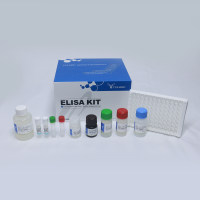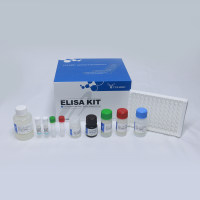Hybrid Capture of Putative Tumor Suppressor Genes
互联网
互联网
相关产品推荐

促销中大鼠肿瘤坏死因子α(TNF-α)/Rat TNF-α/tumor necrosis factor (TNF superfamily,member 2)/Tnf;Tnfa;Tnfsf2;Tumor necrosis factor;Cachectin;TNF-alpha;Tumor necrosis factor ligand superfamily member 2;TNF-a) [Cleaved into: Tumor necrosis factor;membrane for/TNF/ELISA试剂盒
¥3420¥3800

Recombinant-Xenopus-tropicalis-Transmembrane-protein-173tmem173Transmembrane protein 173 Alternative name(s): Stimulator of interferon genes protein; STING
¥11704

Recombinant-Saccharum-hybrid-ATP-synthase-subunit-a-chloroplasticatpIATP synthase subunit a, chloroplastic Alternative name(s): ATP synthase F0 sector subunit a F-ATPase subunit IV
¥10976

hmwC/hmwC蛋白/Putative accessory processing protein蛋白/Recombinant Yersinia pestis Putative accessory processing protein (hmwC), partial重组蛋白
¥69

促销中小鼠肿瘤坏死因子α(TNF-α)酶联免疫试剂盒Mouse Tumor necrosis factor α,TNF-α ELISA KIT
¥3420¥3800

